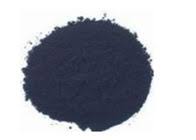Leading Manufacturers of Indigo Dyes and Their Innovative Production Techniques
The Indigo Dyes Industry A Journey Through History and Innovation
Indigo dye has a rich history that dates back thousands of years, deeply rooted in various cultures around the globe. The vibrant blue color has been cherished for its beauty and symbolism, making it one of the oldest dyes used by mankind. Today, the indigo dye industry has evolved dramatically, transitioning from traditional methods of extraction to modern manufacturing processes that meet the demands of fashion, textile, and home decor industries.
A Historical Perspective
The use of indigo can be traced back to ancient civilizations. In South America, India, Africa, and the Middle East, indigo was derived from plants such as the Indigofera tinctoria. Historically, it was not only used for dyeing textiles but also held cultural significance. For instance, in India, indigo was associated with royalty and was often used to dye garments worn by the elite. The process of extracting indigo was labor-intensive, involving the fermentation of plant leaves, which was a practice passed down through generations.
During the colonial period, indigo became a significant cash crop, particularly in regions like Bengal in India and the American South. The demand for indigo increased, leading to its cultivation on a larger scale. However, the labor involved often resulted in exploitation and conflict, as plantation owners sought to maximize profits without considering the well-being of laborers. This complex history is essential to understanding the contemporary indigo dye industry.
Modern Manufacturing Techniques
Today, indigo dye is produced using two primary methods natural extraction from plants and synthetic production. Natural indigo, revered for its organic qualities and ecological benefits, is still cultivated in several countries, including India, Japan, and West Africa. This method, while environmentally friendly, is limited in scale and can be uneven in quality.
On the other hand, synthetic indigo dye, which was first synthesized in the late 19th century, has transformed the industry. It is produced through chemical processes using aniline, a derivative of coal tar, which allows for consistent quality and the ability to meet large-scale demands. This has made synthetic indigo the preferred choice for many manufacturers, particularly in the denim industry, where the uniformity of color is crucial.
Environmental Impact and Sustainability
indigo dyes manufacturers

As the indigo dye industry continues to grow, there is an increasing awareness of its environmental impact. The manufacturing processes, especially in synthetic dyeing, often involve harmful chemicals and significant water consumption. This has prompted manufacturers to explore more sustainable practices. Innovations in production techniques, such as the use of eco-friendly chemicals and waterless dyeing methods, are gaining traction.
Moreover, many brands are now prioritizing sustainability by sourcing natural indigo or employing practices that reduce waste and lower environmental footprints. These efforts are also driven by consumer demand for environmentally conscious products, leading to a resurgence of interest in natural indigo dyes.
The Role of Manufacturers in the Indigo Market
Manufacturers play a critical role in shaping the indigo dye industry. From large-scale textile producers to artisan dye houses, each has a unique contribution to the market. Major clothing brands now seek to partner with manufacturers who emphasize ethical practices, sustainability, and transparency in their supply chains.
Moreover, the rise of digital printing technology has further transformed how indigo textiles are produced and marketed. Custom designs and small-batch productions have become more accessible, allowing independent designers to experiment with indigo and create unique products. This shift fosters creativity and innovation within the industry while reducing the reliance on mass-produced garments.
Conclusion
The indigo dyes industry stands at the intersection of tradition and modernity. Its journey from ancient practices to contemporary manufacturing reflects broader cultural shifts and technological advancements. As the demand for sustainable and unique products grows, the revival of natural indigo and ethical manufacturing processes may reshape the future of indigo dyes. Manufacturers who prioritize environmental responsibility and transparency will likely thrive in this evolving market, ensuring that the legacy of indigo continues for generations to come.
In summary, while the indigo dye industry has come a long way, its history and ongoing evolution remind us of the delicate balance between preserving tradition and embracing innovation.
-
Sulphur Black Dyes in Daily Use
NewsMay.07,2025
-
Indigo Dyeing for Daily Life
NewsMay.07,2025
-
Indigo Dye Production and Its Growing Demand
NewsMay.07,2025
-
Color That Lasts
NewsMay.07,2025
-
Bromo Indigo for Modern Use
NewsMay.07,2025
-
Blue From Nature
NewsMay.07,2025
-
The Timeless Color in Fashion and Textiles
NewsApr.10,2025

Sulphur Black
1.Name: sulphur black; Sulfur Black; Sulphur Black 1;
2.Structure formula:
3.Molecule formula: C6H4N2O5
4.CAS No.: 1326-82-5
5.HS code: 32041911
6.Product specification:Appearance:black phosphorus flakes; black liquid

Bromo Indigo; Vat Bromo-Indigo; C.I.Vat Blue 5
1.Name: Bromo indigo; Vat bromo-indigo; C.I.Vat blue 5;
2.Structure formula:
3.Molecule formula: C16H6Br4N2O2
4.CAS No.: 2475-31-2
5.HS code: 3204151000 6.Major usage and instruction: Be mainly used to dye cotton fabrics.

Indigo Blue Vat Blue
1.Name: indigo blue,vat blue 1,
2.Structure formula:
3.Molecule formula: C16H10N2O2
4.. CAS No.: 482-89-3
5.Molecule weight: 262.62
6.HS code: 3204151000
7.Major usage and instruction: Be mainly used to dye cotton fabrics.

